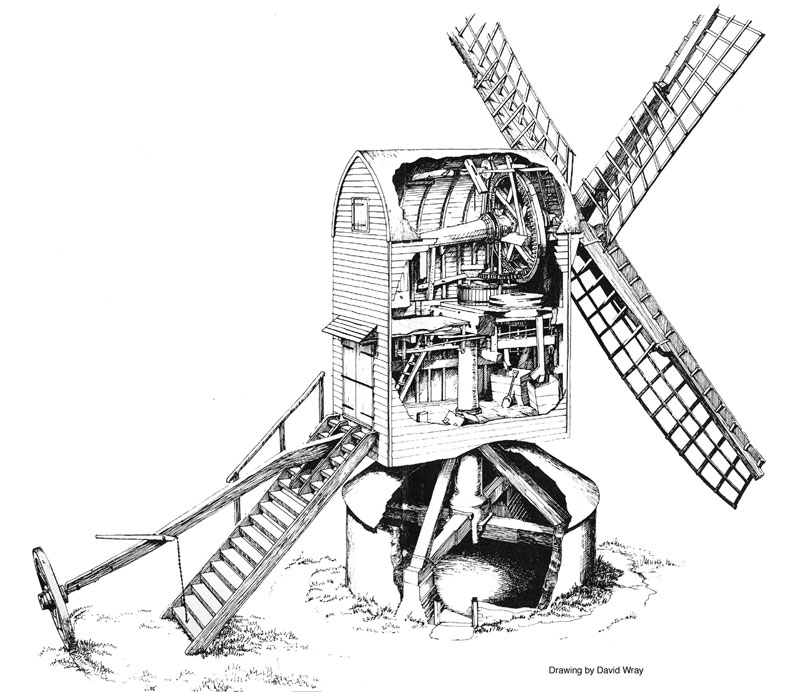
|
Norfolk Mills |
Windmill Machinery |
A postmill is a windmill in which the buck or body is supported by a main post and revolves so that the sails can turn into the wind. |
A towermill is a windmill that has a tower made of brick or stone with a wooden cap that revolves so that the sails can turn into the wind. |
A smockmill is a windmill similar to a towermill but has a wooden tower set on a brick or stone base with a wooden cap that revolves so that the sails can turn into the wind. A smockmill is named after a countryman's smock, due to the shape of the tower. The internal layout is also similar to that of a towermill. |
A drainage mill (windpump) is a wind pump that was usually a tower made of brick or stone that has a wooden cap that revolves so that the sails can turn into the wind. The sails either power a scoop wheel or a turbine, with a few also having a small pair of millstones for grinding corn. |
Roller Milling Process Roller milling is much faster than stone milling and contributed to the demise of watermills and windmills. |
 |
Internal layout of a typical postmill with roundhouse and turned to wind by hand |
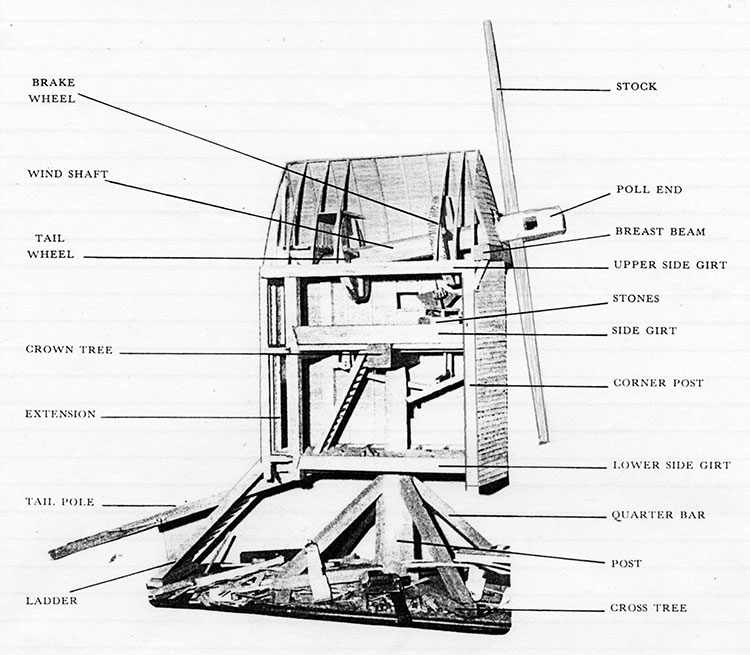 |
Early postmill layout - open trestle and turned to wind by hand |
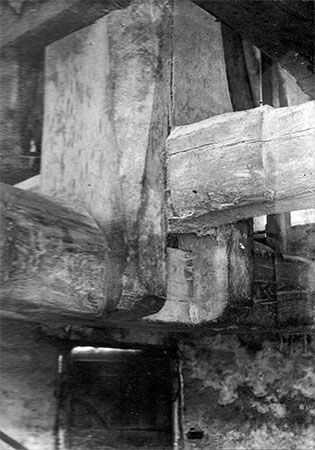 |
| Base of centrepost and supports in a roundhouse |
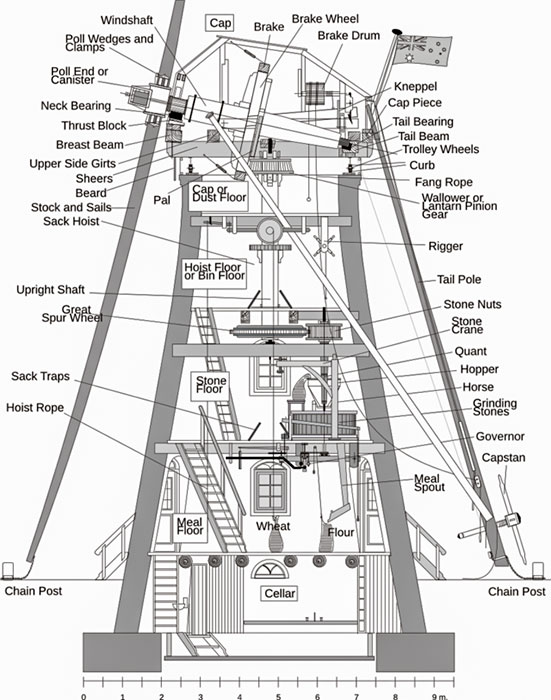 |
Typical towermill internal layout |
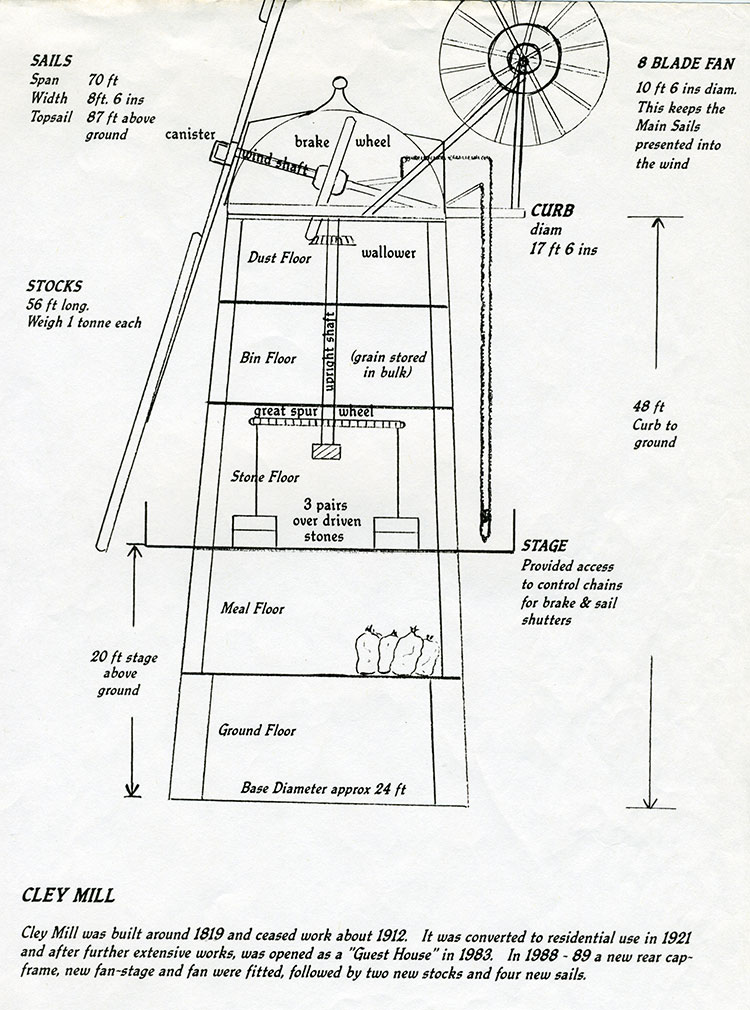 |
Cley towermill's internal layout |
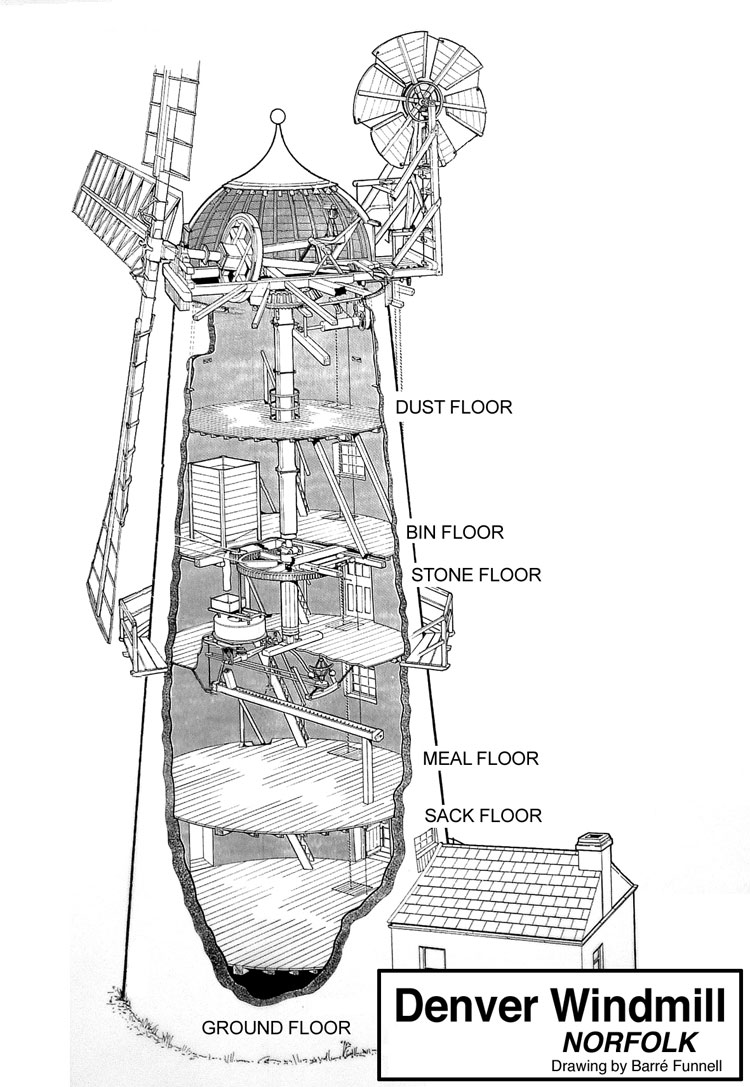 |
Denver towermill's internal layout drawn by Barré Funnell |
Stone Dressing Mill stones worked in pairs.The bedstone was stationary and the runner stone rotated above it, hung on a vertical spindle. The milling faces of the stones were given deep furrows and grooves that helped braeak up the grain. Over time, these furrows wore down with use and had to constantly be recut, a process known as dressing the stone. |
Jumper A Jumper is often mentioned in mill sale adverts . . . |
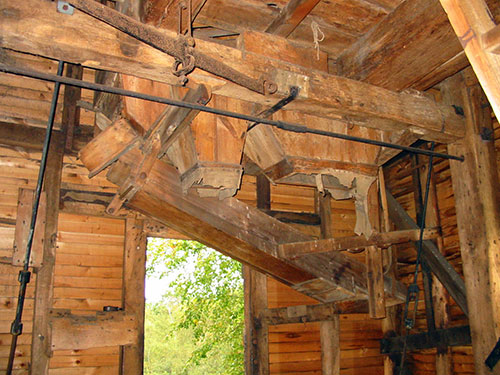 |
A jumper is another term for a jog scry. This is a reciprocating sieve, hence the 'jogging'. Scries were used in various positions in mills, to sieve flour or grain. A jog scry is often used in conjunction with a flour dresser, to sieve the bran after it comes out of the dresser to extract more white flour particles. The attached example is from Keston post mill, Kent (now L B Bromley). It is basically a set of shallow wooden boxes placed on top of each other with a wire mesh bottom, or part bottom. The tailings from the dresser are fed in at the top end and collected at the lower end. Often the upper end of the jog scry was hinged and the lower end was jogged up and down. At Friston post mill, Suffolk, this was done by way of a cam on the tail wheel, a lever hitting the cam and a long lether belt attached to the scry. It was quite noisy. At Wicken smock mill, Cambs, the team have reconstructed a working jog scry. Luke Bonwick - December 2021 |
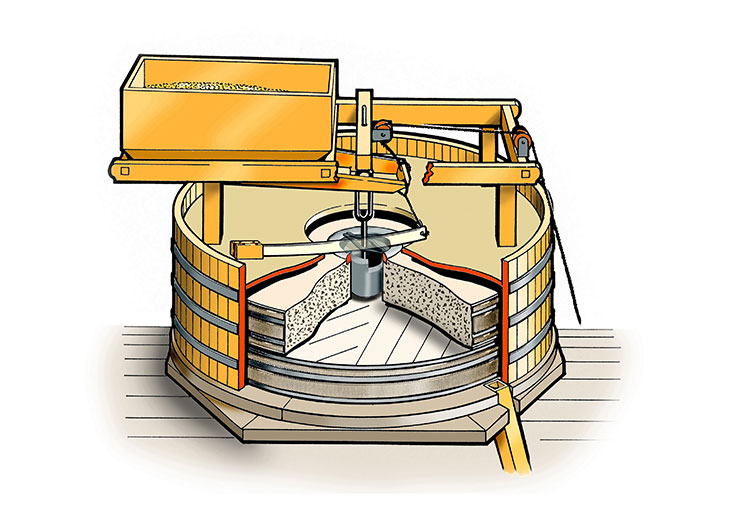 |
|
Cutaway diagram of millstones layout drawn by Barré Funnell |
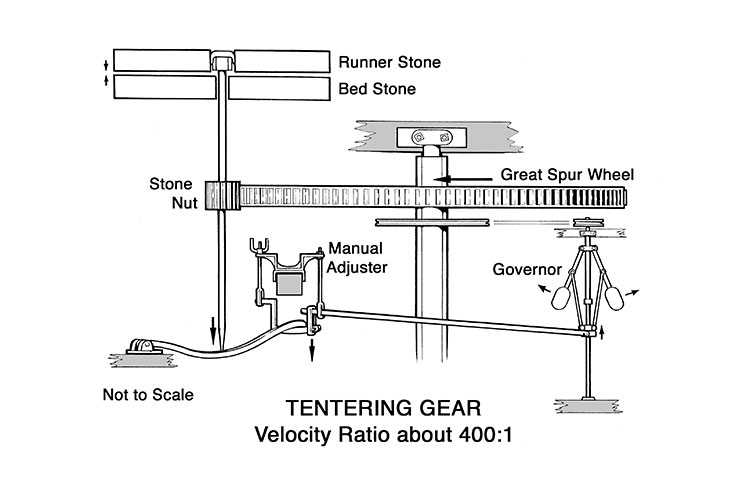 |
|
Diagram of millstones tentering gear drawn by Barré Funnell |
The Decline Of Village Mills
Until the mid-l9th century, many villages had wind or watermills to grind flour for the community. Before Henry VIII's dissolution of the monasteries commencing in 1539, most mills were owned either by the Church or by the Lord of the Manor. Milling rights were jealously guarded, and villagers would have been allowed to grind corn only at their landlord's mill. The law at that time required flour to be ground only at your Lord's mill - known as his "Right of Soke". The miller charged up to 10% of the grain, and the landlord frequently took a further cut. At that time bread made with flour from English wheat was very different to that which we know today; it was very much heavier and little risen. The best milling wheat would later come from America where, because of the climate, the grain was harder and produced a stronger flour (containing a higher proportion of gluten). After the repeal of the corn laws in 1846, plentiful supplies of American wheat became available. This gave a significant advantage to mills based near the major seaports. At about the same time, a more efficient milling process was invented in Germany; in this the grain was crushed between two steel rollers, rather than ground between millstones. By the mid to late nineteenth century, many of the old watermills and even windmills were adding steam, gas or oil engines in an attempt to compete with their modern counterparts. They could not survive however against this early form of mass production and by the beginning of the twentieth century most were reduced to the grist milling of animal foodstuffs. |
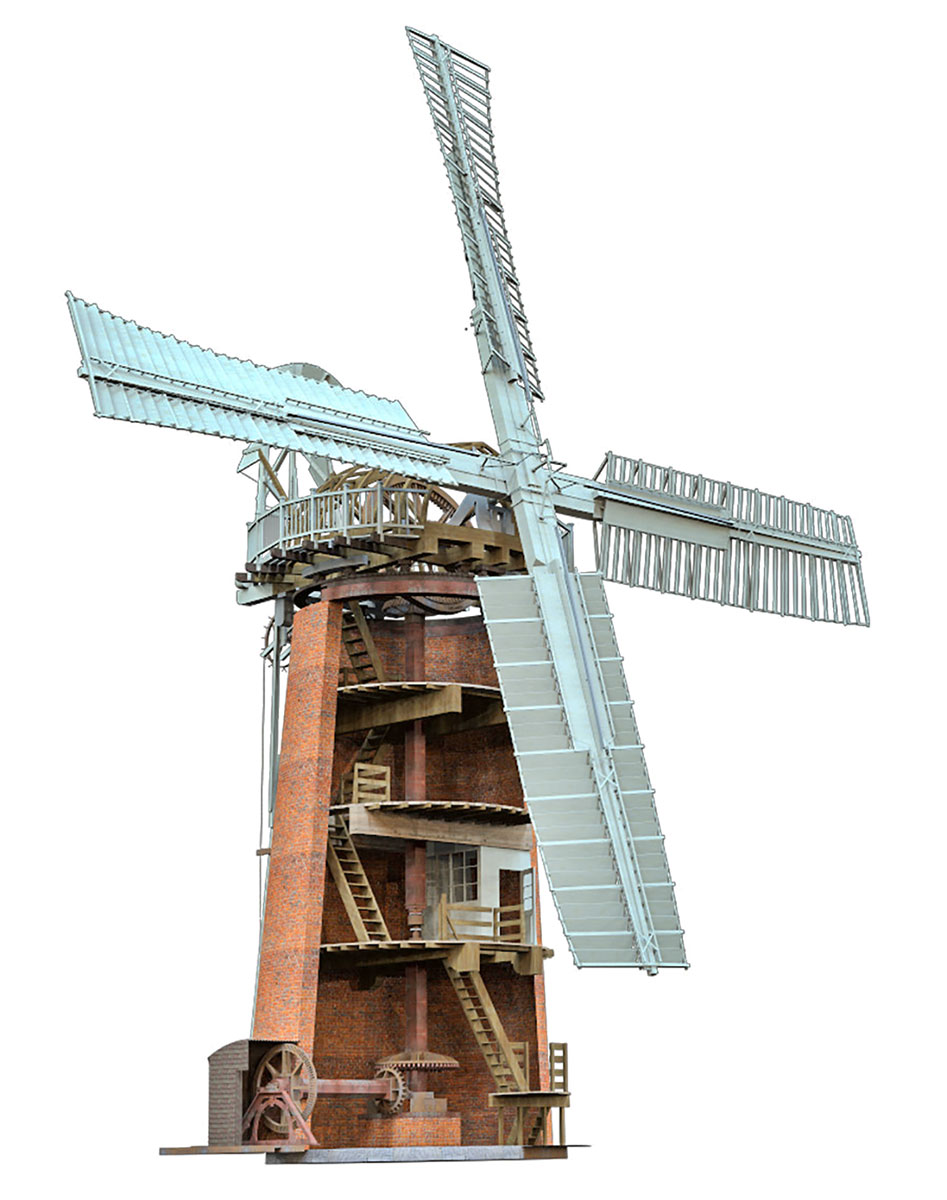 |
Horsey drainge pump internal layout drawn by John Brandrick |
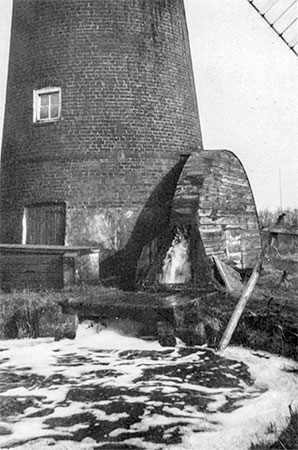 |
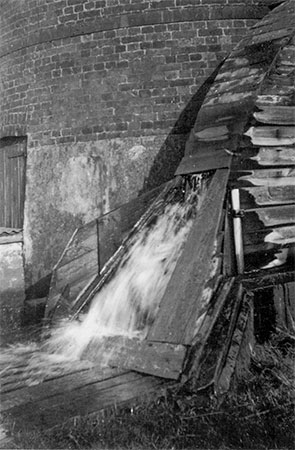 |
Windpump in operation |
|
If you have any memories, anecdotes or photos please let us know and we may be able to use them to update the site. By all means telephone 07836 675369 or
. |
Copyright © Jonathan Neville 2006 |